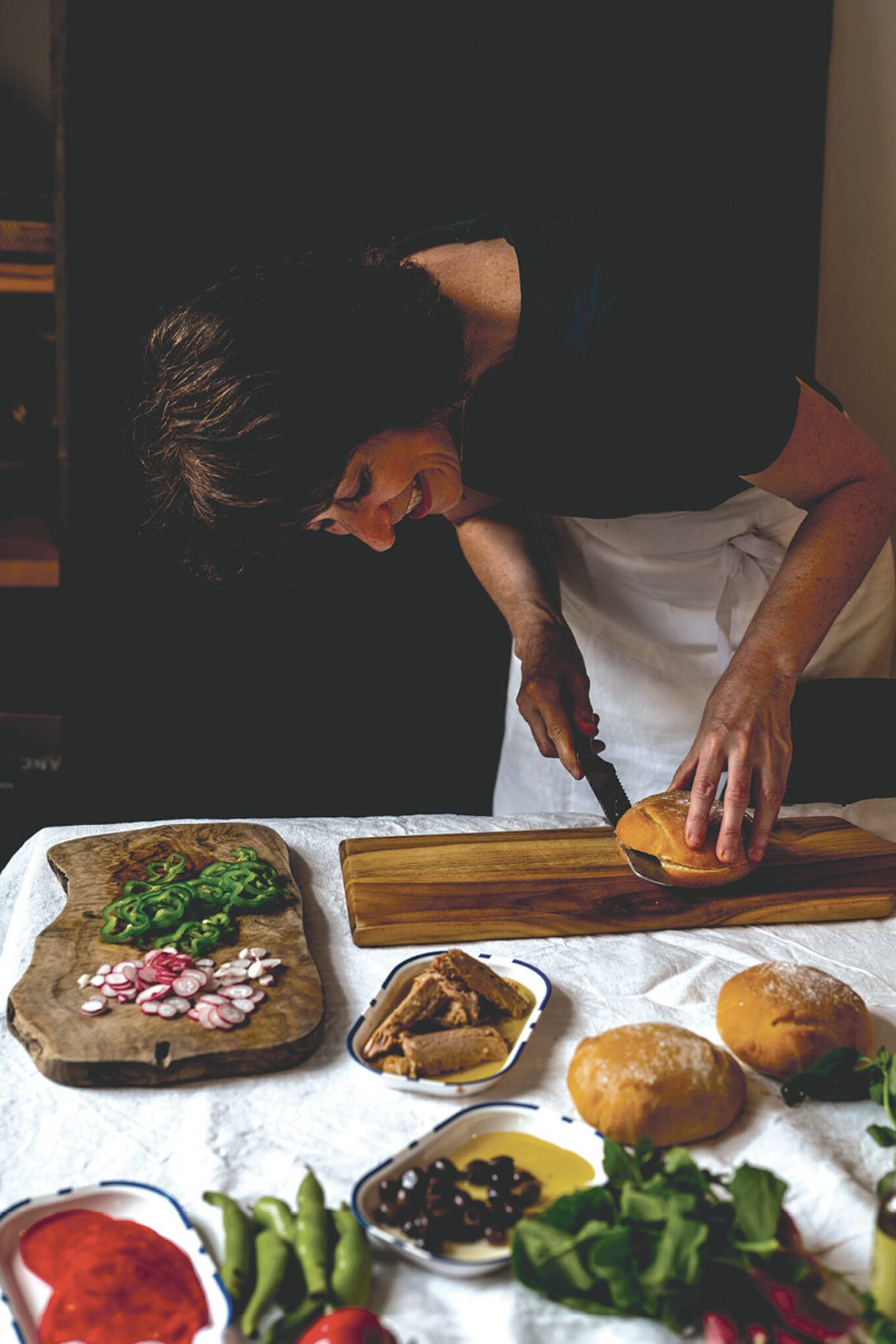
Words by Rosa Jackson. Photos by Jan Hendrik van der Westhuizen.
This versatile dough can be used as a base for many different toppings, most famously slow-cooked onions, anchovy, and olives for Pissaladière, or for Tarte à la Tomate, with vine-ripened tomatoes, garlic, and parsley. I also transform this dough into buns for the Niçoise sandwich Pan Bagnat, and sweeten it to make fougassettes; see the Variation. One of my favorite Old Town bakeries, La Fougasserie—which, sadly, no longer exists—offered a variety of vegetable toppings for fougasse, including a hearty version made with potato, bacon, and a light sprinkling of cheese. This dough becomes fougasse when it is shaped into an oval with diagonal slashes to represent an ear of wheat; it’s similar to Italian focaccia, but the Niçoise version has a softer texture because of the addition of an egg.
The dough might seems sticky to work with at first, but the more moisture it contains, the better the texture will be once it’s baked, so add more flour a very small amount at a time until it becomes workable. If you use Italian 00 flour, you may need to add more flour. As you knead it, the dough should grow less sticky, though if your hands are naturally warm, you may have more trouble with it (this is one time when I am grateful for my cool extremities!). You can also make it in a food processor or in a stand mixer with a dough hook, but I find the silky dough particularly pleasurable to knead by hand.
Order your copy of Niçoise: Market-Inspired Cooking from France’s Sunniest City by Rosa Jackson and savor the flavors of the French Riviera.
Pâte à fougasse
Ingredients
- 1½ teaspoons active dry yeast or 1 tablespoon fresh, brewer’s yeast
- ⅓ cup (80 ml) warm (not hot) water, plus more if needed
- 1 teaspoon sugar
- 1⅔ cups (200 g) all-purpose, bread, or Italian 00 flour, plus more if needed
- 1 teaspoon fine sea salt
- 2 tablespoons extra-virgin olive oil, plus more for kneading the dough
- 1 large egg, at room temperature
Instructions
- 1 In a small bowl, dissolve the yeast in the water with the sugar; set aside for a few minutes, until the mixture starts to bubble.
- 2 In a mixing bowl, combine the flour and salt. Make a well in the center and add the olive oil, egg, and yeast-water mixture. Using a pastry scraper or a fork, break up the egg, then combine all the ingredients until you have a dough that is soft and slightly sticky but not wet, adding a little more flour or water as necessary (be careful to add just a little of either of these at a time).
- 3 Rub a little olive oil onto your hands and your work surface, turn out the dough, and knead for 3 to 4 minutes, until velvety. I like to use a kneading technique I learned at the Cordon Bleu Hold the dough by one side, lift it high off the board, and slam the other end down on the work surface, without letting go; this will stretch the dough. Then fold it from the bottom up (folding the dough in your hand over the dough on the board), press it down very lightly, and grab the dough from the right side if you are right-handed, or from the left side if you are left-handed, giving it a quarter turn toward yourself. Repeat the process until the dough feels smooth and bouncy. When you press it with your finger, it should spring back. If the dough is too sticky to knead, add a little more oil to the work surface and your hand; if it remains impossibly sticky, sprinkle with a little more flour. A plastic pastry scraper is useful for scraping up any dough that has stuck to the work surface.
- 4 Shape the dough into a ball by cupping both hands and squeezing the base as you turn it a few times on your work surface. Transfer it to a bowl, cover with a plate or plastic wrap, and set aside in a warm place to rise for at least 45 minutes, until doubled in size. At this stage, you can refrigerate the dough, covered, for up to 2 days; remove it 30 minutes before proceeding with your chosen recipe.
Niçoise: Market-Inspired Cooking from France’s Sunniest City by Rosa Jackson, photos by Jan Hendrik van der Westhuizen (W. W. Norton & Company, 2024).